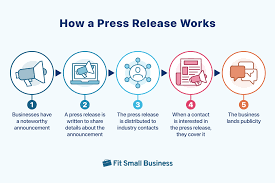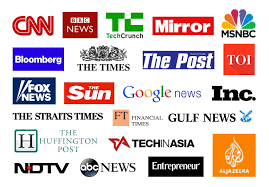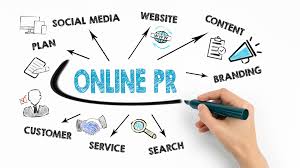Maximising Your Reach: The Impact of Professional Press Release Services
The Power of Press Release Services
Press release services play a crucial role in the world of public relations and communication. They are a valuable tool for businesses looking to share news, updates, and announcements with the media and the public.
One of the key benefits of using press release services is their ability to reach a wide audience. By distributing press releases through various channels, businesses can ensure that their message reaches journalists, bloggers, influencers, and potential customers.
Press releases also help businesses establish credibility and authority in their industry. When a company shares important news through a well-crafted press release, it can enhance its reputation and build trust with stakeholders.
Furthermore, press release services can boost visibility and brand awareness. By appearing in news outlets and online publications, businesses can increase their exposure and attract new audiences.
Another advantage of using press release services is their SEO benefits. Press releases distributed online can improve search engine rankings and drive organic traffic to a company’s website.
In today’s fast-paced digital world, press release services are an essential part of any comprehensive communication strategy. They help businesses cut through the noise and deliver their message directly to their target audience.
Overall, press release services offer a cost-effective way for businesses to promote their brand, share news, and engage with stakeholders. By leveraging the power of press releases, companies can enhance their visibility, credibility, and reputation in the market.
7 Essential Tips for Effective Press Release Services
- Ensure the press release is newsworthy and relevant to the target audience.
- Craft a compelling headline that grabs attention and summarises the key message.
- Include quotes from key stakeholders to add credibility and human interest.
- Provide all necessary information, such as contact details and relevant dates, in a clear format.
- Tailor the press release to suit different media outlets for better coverage.
- Proofread carefully to avoid any spelling or grammatical errors that could undermine credibility.
- Follow up with journalists or editors after sending the press release to maximise chances of coverage.
Ensure the press release is newsworthy and relevant to the target audience.
It is crucial to ensure that the press release is both newsworthy and relevant to the target audience. A well-crafted press release should contain information that is timely, interesting, and valuable to the readers it aims to reach. By focusing on creating content that resonates with the target audience, businesses can increase the chances of their press release being picked up by journalists and media outlets. This approach not only enhances the credibility of the company but also maximizes the impact of the communication efforts, ultimately leading to a more successful PR campaign.
Craft a compelling headline that grabs attention and summarises the key message.
When utilising press release services, it is essential to craft a compelling headline that not only grabs attention but also succinctly summarises the key message of the release. A well-crafted headline serves as the first point of contact with the audience, enticing them to read further and engage with the content. By creating a headline that is both attention-grabbing and informative, businesses can maximise the impact of their press releases and increase the chances of their message resonating with the target audience.
Include quotes from key stakeholders to add credibility and human interest.
Including quotes from key stakeholders in press releases is a valuable strategy to enhance credibility and human interest. By incorporating insights and perspectives from executives, clients, or industry experts, businesses can add a personal touch to their announcements. These quotes not only provide credibility by showcasing endorsements from trusted individuals but also help humanize the message, making it more relatable and engaging for the audience. Stakeholder quotes can offer unique insights, emotional appeal, or expert opinions that strengthen the overall impact of the press release and resonate with readers on a deeper level.
Provide all necessary information, such as contact details and relevant dates, in a clear format.
When utilising press release services, it is essential to provide all necessary information, including contact details and relevant dates, in a clear and concise format. By ensuring that key details are easily accessible, journalists and readers can quickly grasp the important aspects of the announcement. Clear information helps in establishing credibility and facilitating further communication, ultimately enhancing the effectiveness of the press release in reaching its intended audience.
Tailor the press release to suit different media outlets for better coverage.
Tailoring the press release to suit different media outlets is a strategic tip that can significantly enhance coverage and impact. By customizing the content and angle of the press release to align with the preferences and interests of specific media outlets, businesses can increase the chances of getting their story picked up. This approach demonstrates an understanding of each outlet’s audience and style, making it more likely for journalists to find the story relevant and compelling for their readers. Ultimately, adapting the press release for different media platforms can lead to broader coverage, increased visibility, and a more successful communication strategy overall.
Proofread carefully to avoid any spelling or grammatical errors that could undermine credibility.
Proofreading carefully is essential when using press release services to ensure that your message is conveyed clearly and professionally. Spelling or grammatical errors can detract from the credibility of your news and undermine the impact of your announcement. By taking the time to review and edit your press release thoroughly, you demonstrate attention to detail and a commitment to quality, enhancing the overall effectiveness of your communication strategy.
Follow up with journalists or editors after sending the press release to maximise chances of coverage.
Following up with journalists or editors after sending a press release is a crucial step in maximising the chances of coverage. By reaching out to them directly, businesses can ensure that their news has been received and capture the attention of busy media professionals. This proactive approach not only demonstrates the importance of the information being shared but also allows for any additional details or clarifications to be provided, increasing the likelihood of the press release being considered for publication. Building relationships with journalists through follow-ups can lead to increased coverage and visibility for businesses looking to make an impact in the media landscape.












